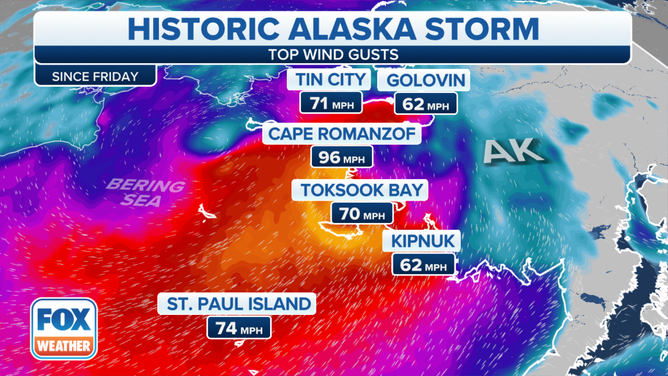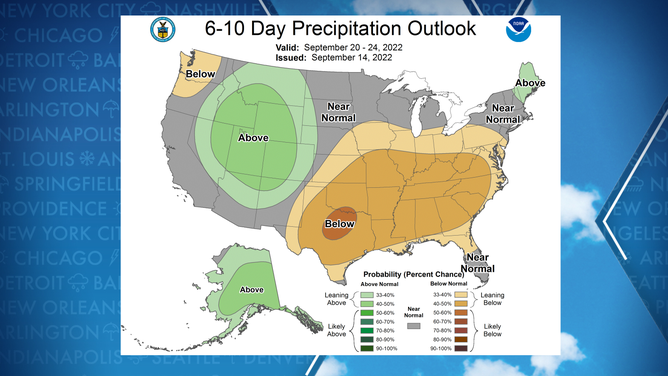As it moves nearly straight north, past the Aleutian Islands, and into the Bering Sea, what was formerly Typhoon Merbok has changed into a strong northern Pacific storm. It will deliver a devastating storm surge that could submerge coastal cities and villages beneath several feet of water for hours.
Alaska’s GOLOVIN On Friday and Saturday, a record storm pounded western Alaska with hurricane-force winds, waves that reached over 50 feet, and coastal flooding that had not been witnessed in decades.
Typhoon Merbok changed into a strong northern Pacific storm as it sped over the Aleutian Islands on Friday and the Bering Sea on Saturday. This storm surge brought perilous conditions, submerging coastal towns and villages under several feet of water for hours.
According to the National Weather Service, Unalakleet’s water levels were above 11 feet on Saturday morning and were on track to achieve one of their highest peaks ever later that day when they peaked at 15 feet.
Golovin had significant floods after being hit by wind and rain simultaneously.
On September 17, 2022, a severe storm blows through Golovin, Alaska, flooding the town due to storm surge. (C. Lewis via the Fairbanks National Weather Service)
Picture 4 of 4 While residences and other buildings were inundated, water is currently approaching the school. The National Weather Service in Fairbanks reported that “a few residences were floating off the foundation” and “several fuel tanks are turned over.”
On Saturday afternoon, the water level was predicted to be at its highest. Winds there have gusted as high as 62 mph in the meanwhile.

: Storm surge forecast for Alaska (FOX Weather) Shaktoolik was being inundated by water from the Bering Sea that was breaching berms and infiltrating the coastal village on the verge of flooding. The town’s clinic and school are now receiving displaced residents.
The predicted peak surge in Nome is 12.45 feet, or 9 feet above high tide, for later on Saturday, with waters in Red Dog rising 5 feet above high tide.
IN SOME PLACES, WINDS REACH 90 MPH. Strong winds blowing around the deep storm center, which had dropped as low as 937 millibars as it approached the Aleutian Islands, propelled the storm surge.
A gust of 91 mph was recorded at Cape Romanzof, 74 mph on St. Paul Island, and 62 mph at Adak and Golovin.

(FOX Weather)
The storm caused monster seas to break over 50 feet offshore. Late on Friday morning, there was an buoy 310 miles north of Adak reported wave heights of about 52 feet with gusts of 74 mph.
Britta Merwin, a meteorologist with FOX Weather, said, “Even though it is not officially a typhoon, which is what we could name a hurricane in the (U.S.) it still has all of that incredible force.” Strong winds force in a lot of water, which causes sea levels to increase and coastal flooding as well as storm surge to be a problem.
What’s worse is that high water levels will persist for another 10 to 14 hours as the storm slows on its exit toward the Arctic, allowing wind-driven waves on top of the surge to push deep inland and cause extra damage.
Early on Friday morning, National Weather Service forecasters in Fairbanks wrote: “Impacts may exceed the 2011 Bering Sea Superstorm, and certain sites may experience their worst coastal flooding in nearly 50 years.”
The storm is enormous, Merwin declared. It is still retaining all of its typhoon-era characteristics, but it is now a cold-core system, a non-tropical storm that will lash Alaska with extremely powerful winds.
Although Alaska frequently experiences strong storm systems, it is uncommon to observe an extratropical cyclone with a pressure less than 940 millibars. The storm’s central pressure was assessed to be 937 mb as of 8 a.m. ET, which is the highest deepest low for September in at least the previous 17 years of measurements in the area.
“It will undoubtedly be a huge event. One of the worst disasters we’ve witnessed in years is taking shape “Fairbanks, Alaska’s National Weather Service office reported.
ALASKA’S ECONOMY RECEIVES $5 BILLION FROM THE THREATENED REGION Adak, Unalaska, St. Paul, St. Johns, and Bethel will all be close to the storm’s center, where the strongest winds and rainfall will occur.
“When a storm is approaching, the majority of those Alaskan towns lack the means to evacuate. Therefore, people typically travel to a community shelter, which is a safe alternative “Jeremy Zidek, the Division of Homeland Security and Emergency Management’s public relations officer, stated. People need to be pretty tough to even live in those places because supply chain problems, transportation problems, and weather problems are somewhat common occurrences.
The NWS has issued a number of warnings, including a Coastal Flood Watch, Storm Warning, and Gale Warning, ahead of the arrival of the severe storms.

Wind Alerts for Alaska (FOX Weather) The maritime industry, which provides the majority of the nation’s seafood, is of particular interest to meteorologists and first responders.
Alaska’s production of Pacific salmon, crab, cod, shrimp, herring, sablefish, pollock, and halibut generates more than $5 billion in economic activity annually.
IMPACT OF FOMER TYPHOON MERBOK ON US WEATHER A number of severe storm systems from the West Pacific are predicted to be caught up in the jet stream and have an impact on the weather in the United States, including Typhoon Merbok.
One of the factors enhancing the lifetime and power of the northern cyclones is abnormally warm water in the North Pacific, although it is not adequate to support their ability to retain their tropical cyclone identity into the northern latitudes.
Similar to the Atlantic basin, the Northwest Pacific is seeing a delayed typhoon season, with only about half the storms that are typical by mid-September.
Typhoons Muifa, Hinnamnor, and Merbok have increased activity in the West Pacific in recent weeks.
Most of them, if not all, will have an effect on Alaska in the form of rain, wind, and rough seas, thus the 49th state may be in for a rainy time period.
The NWS Climate Prediction Center experts predict that the state will experience several weeks of rainfall that is above average.

According to forecasters, Alaska will likely experience more rainfall over the coming days.













